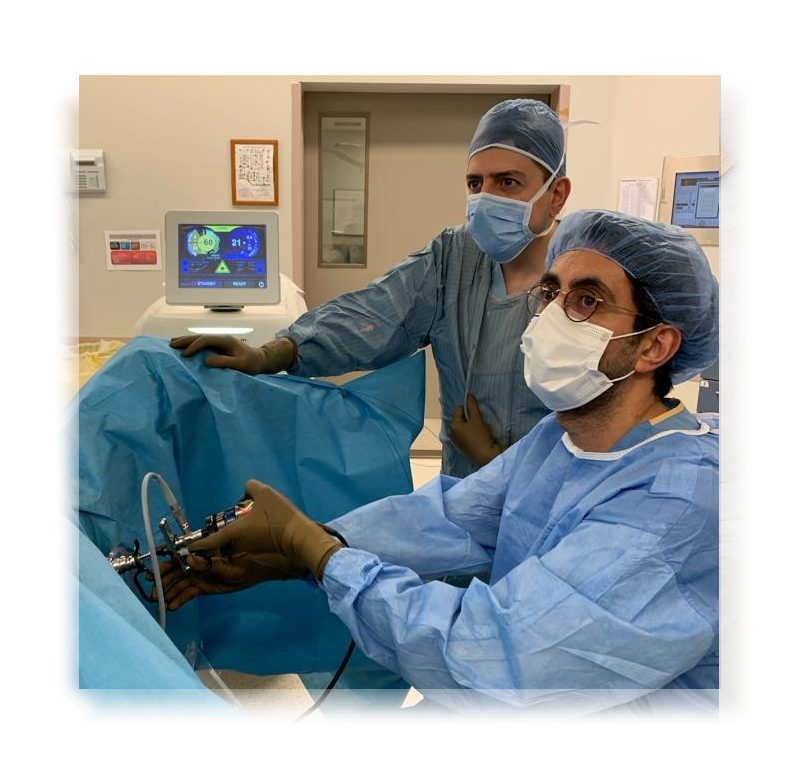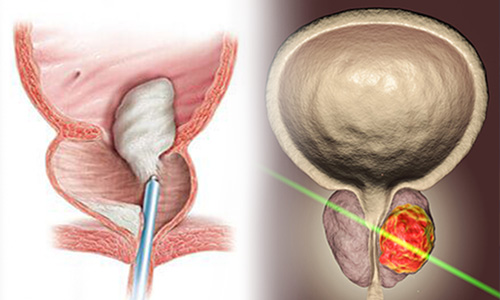What is HoLEP Surgery?
HoLEP surgery is a surgical technique used to treat BPH, a condition characterized by an enlarged prostate gland that can cause urinary symptoms such as frequent urination, weak urine flow, and difficulty emptying the bladder. Unlike traditional prostate surgeries that involve removing the entire prostate gland, HoLEP surgery selectively removes only the excess prostate tissue that is causing the obstruction.
The procedure utilizes a holmium laser, which emits a high-energy light beam. The laser is inserted through the urethra and used to precisely remove the obstructive prostate tissue. The removed tissue is then suctioned out of the bladder.
Does the Removed Prostate Tissue Grow Back?
In most cases, the prostate tissue removed during HoLEP surgery does not grow back. However, it's important to note that BPH is a progressive condition, and the remaining prostate tissue can still undergo further enlargement over time. If the remaining prostate tissue continues to grow and cause urinary symptoms, additional treatments may be needed.
Can HoLEP Surgery Diagnose Prostate Cancer?
Yes, HoLEP surgery can potentially help diagnose prostate cancer in previously undiagnosed patients. The prostate tissue removed during the procedure is sent to a laboratory for testing. By analyzing the tissue, healthcare professionals can determine if there are any signs of prostate cancer or other diseases.
How Much Does HoLEP Surgery Cost?
The cost of HoLEP surgery can vary depending on several factors, including the location of the healthcare facility, the surgeon's experience, the complexity of the procedure, and additional services required. This cost generally covers the surgery, hospital stay, pre-operative and post-operative care, and medications. It's advisable to consult with healthcare providers or hospitals in your region for accurate and up-to-date cost estimates for HoLEP surgery.
Are There Alternative Treatments for BPH?
Yes, there are alternative treatments available for BPH depending on the severity of urinary symptoms, prostate size, and other factors. Some common alternatives to HoLEP surgery include:
· Transurethral Resection of the Prostate (TURP): This procedure involves removing prostate tissue using an electric current passed through a resectoscope.
· Transurethral Incision of the Prostate (TUIP): In this procedure, small incisions are made in the prostate to relieve the obstruction.
· Medications: Alpha-1 blockers, phosphodiesterase-5 inhibitors, and 5-alpha reductase inhibitors are commonly prescribed medications to manage BPH symptoms.
However, HoLEP surgery has gained popularity due to its shorter hospital stay, fewer complications, and quicker recovery compared to other treatment options.
What Should I Expect Before the HoLEP Procedure?
Before undergoing HoLEP surgery, your surgeon may recommend discontinuing blood-thinning medications. However, even if you need to continue taking these medications, HoLEP can still be performed safely. Baseline testing, such as uroflowmetry or pressure flow urodynamics, may be conducted to assess the level of urinary obstruction. Imaging tests may also be used to determine the size of the prostate. You will typically be advised to stop eating at least 6 hours before the surgery.
What Happens During the HoLEP Procedure?
HoLEP surgery is performed under general anesthesia or spinal anesthesia. Once you are asleep or your lower body is numb, a resectoscope is inserted through the urethra. This instrument contains a camera that allows the surgeon to visualize the prostate. A holmium laser is then introduced through the resectoscope to break up the obstructing prostate tissue. The removed tissue is pushed into the bladder and subsequently suctioned out using a morcellator. A catheter is usually inserted to allow the bladder to drain.
What Can I Expect After the HoLEP Procedure?
After the HoLEP procedure, you will likely stay 1-2 days in the hospital. The catheter will be removed before you are discharged. It is normal to experience some bleeding after the surgery, but it usually clears up within 1 week. Drinking plenty of fluids can help clear the blood more quickly. Initially, it may be painful to pass urine, and you may experience increased frequency. Some symptoms may take several months to improve due to bladder overactivity or underactivity. Your surgeon will provide the best guidance on what to expect during your recovery.
What is the Duration of the HoLEP Surgery?
The duration of the HoLEP surgery depends on the size of the prostate. On average, the procedure takes between 60 to 120 minutes. HoLEP surgery generally requires a shorter hospital stay and less time with a catheter compared to other procedures such as TURP or open prostatectomy. It may take up to 2 weeks before you can return to work or resume normal activities. During this time, it is advised to avoid heavy lifting, sexual intercourse for 2 weeks, and activities that involve straddling for a month.
What are the Potential Complications of HoLEP Surgery?
As with any surgical procedure, there are potential complications associated with HoLEP surgery. Some possible complications include:
· Blood in urine: Some bleeding is expected after the surgery, but it should clear up within a short period.
· General surgical risks: Risks associated with anesthesia reactions or bleeding can occur.
· Bladder or urethra injury: There is a small risk of injury to the bladder or urethra during the procedure.
· Prostate injury: Although rare, there is a possibility of injury to the prostate during HoLEP surgery.
· Bladder infection: Infections can occur after any surgical procedure, including HoLEP surgery.
· Erectile dysfunction: The risk of post-treatment erectile dysfunction is similar to that of open prostatectomy and TURP.
It's important to discuss these potential complications with your surgeon to fully understand the risks.
Who is a Candidate for HoLEP Surgery?
HoLEP surgery is typically recommended for individuals with BPH who have not responded to medications or other conservative treatments. It may also be a suitable option for men taking blood-thinning medications who may not be able to undergo other surgical procedures. Additionally, HoLEP surgery may be considered for individuals with large-volume BPH who are not suitable candidates for other noninvasive treatments.
Are There Other Treatment Options for an Enlarged Prostate?
Aside from HoLEP surgery, there are other treatment options available for an enlarged prostate. These include:
· Lifestyle changes: Making lifestyle changes such as frequent bathroom visits, minimizing alcohol and caffeine intake, and urinating as soon as the need arises can help manage mild cases of BPH.
· Medications: Alpha-1 blockers, phosphodiesterase-5 inhibitors, and 5-alpha reductase inhibitors are commonly prescribed medications to alleviate BPH symptoms.
· Traditional surgical options: Open prostatectomy and Transurethral Resection of the Prostate (TURP) are surgical options for severe cases of BPH.
It's important to discuss these options with your healthcare provider to determine the best course of treatment for your specific condition.
Conclusion
HoLEP surgery is an effective treatment option for individuals with BPH who have not responded to medications or other conservative treatments. The procedure selectively removes excess prostate tissue, providing relief from urinary symptoms. While the surgery has a shorter hospital stay and quicker recovery compared to other options, it is essential to understand the potential risks and complications associated with the procedure. By consulting with a qualified healthcare professional, you can determine if HoLEP surgery is the right choice for you.
Read More : HoLEP: A Minimally Invasive Treatment for Enlarged Prostate









